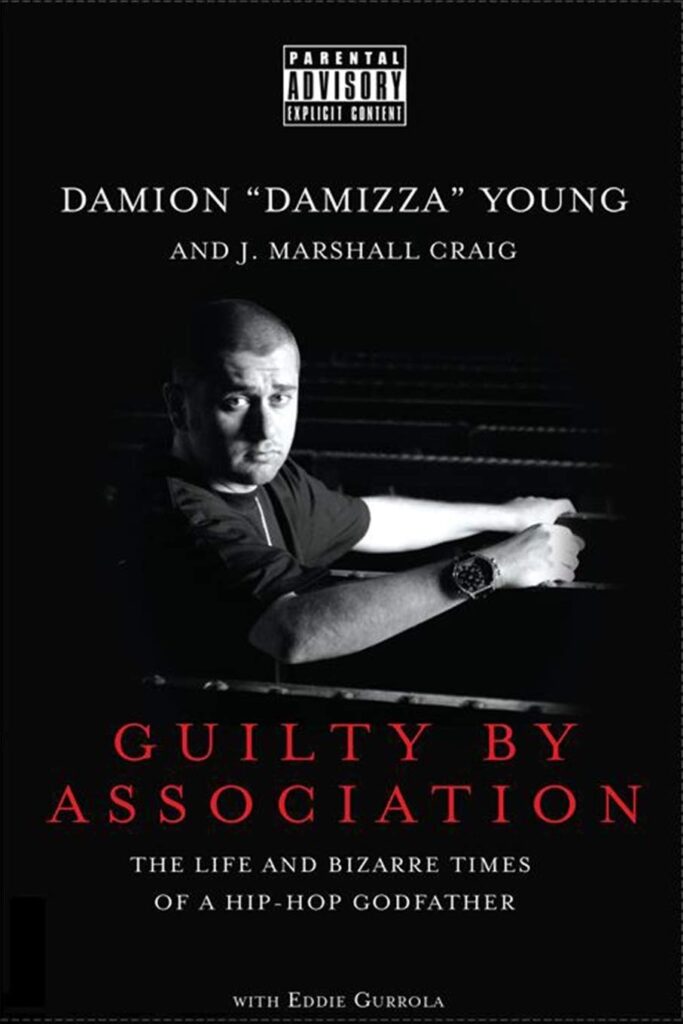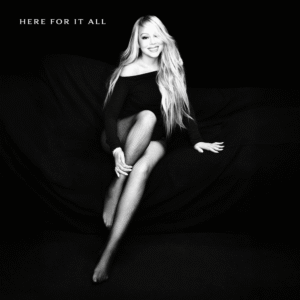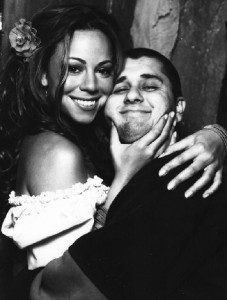
The DJ and the Diva: Inside Damizza and Mariah Carey’s Unlikely Bond
In the late 1990s, the story of Damizza and Mariah Carey began in a way that felt almost implausible. Damion “Damizza” Young was an ambitious hip-hop DJ helping transform L.A.’s Power 106 into a rap powerhouse. Mariah Carey, meanwhile, was one of the world’s biggest pop stars – not exactly the type to cold-call a local radio jock. But that’s exactly what happened. Driving to a Dr. Dre video shoot one day in 1998, Damizza’s phone rang. On the line was Mariah Carey herself, greeting him “just to say hi.” He’d only met her briefly once before, so the unexpected outreach left him floored. This unlikely moment would spark a personal and professional relationship that spanned years and multiple hits – and ultimately weathered breakdowns, feuds, and tabloid drama.
Damizza, then in his early 20s, was already a diehard Mariah fan. He had come up in radio as a true hip-hop head, but admired Carey’s talent and savvy. In fact, that first brief meeting occurred when Mariah phoned in to Power 106 to thank the station for supporting a group she had signed to her vanity label, Crave. During that call, Damizza couldn’t resist asking about a surprising sample on her new song “The Roof” – an R&B slow jam laced with Mobb Deep’s notorious rap beat. “You’re Mariah Carey! How do you know about Mobb Deep?” he blurted. She laughed and explained she’d grown up loving hip-hop in New York. The exchange revealed a shared passion for music and radio that would form the basis of their bond. As Damizza later noted, Mariah “truly worships music and knows more about radio than I do” – she could geek out on programming and production minutiae with the best of them.
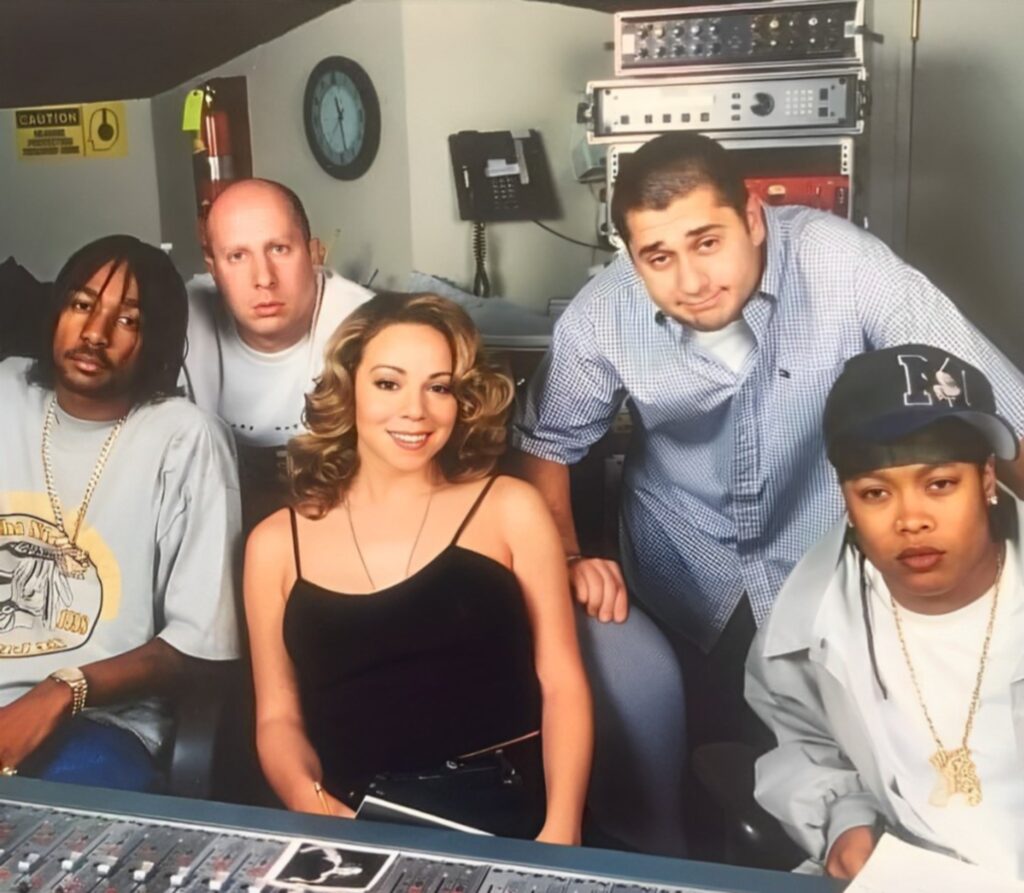
That mutual understanding set the stage for a fast friendship. Mariah was drawn to the blunt, unpretentious young DJ who spoke to her not as an untouchable diva, but as a fellow music nerd. Damizza, for his part, was dazzled to find the megastar so “down to earth…brilliant…extremely funny” once the superstar mask was off. In his memoir Guilty by Association, he even confessed: “There is only one woman I have ever been in love with,” he wrote, referring to Mariah. From the jump, the connection between Damizza and Mariah Carey was deeper than typical industry acquaintances. Mariah would later keep a photo of them on the set of her “I Still Believe” video beside her bed – a telling token of how important Damizza became in her life.
Radio Beginnings and a Serendipitous Call
Soon, Damizza found himself not only Mariah’s friend, but a creative collaborator and behind-the-scenes fixer. In 1998, she tapped the little-known DJ to co-produce a remix of her single “I Still Believe.” The track, which featured Bone Thugs-N-Harmony’s Krayzie Bone and rapper Da Brat, became Damizza’s first major production credit – and a crash course in Mariah’s tireless work ethic. He was awed watching her roll into a midnight studio session after a full day shooting a music video, then lay down vocals until dawn with absolute precision. “The girl had spent all day…she showed up at 1 a.m. to begin recording. And she was pumped and totally prepared,” he marveled.
That remix’s success forged a trust between them. Damizza proved he could deliver in the studio – and more importantly, that Mariah could count on him in a pinch. He became, in his words, a facilitator and “babysitter” for superstar egos. When Mariah wanted to collaborate with Jay-Z in 1999, for example, she enlisted Damizza to make it happen. At the time, Jay-Z was a rising rap star and Mariah a pop icon, but neither wanted to be the first to call the other. So Damizza personally arranged a dinner at Mr. Chow in Los Angeles, tricking both artists into showing up. Even then, the two stars sat at separate tables at first, shyly sizing each other up. Fed up with “this ego game,” Damizza marched Mariah over and introduced her to Jay-Z like a kindergarten teacher seating reluctant playmates: “Mariah, have you met Jay-Z?”. Before long, the ice was broken. The trio ended up partying together that night – dancing on tables and “wipin’ out Cristal” with Puff Daddy and Nas – and Jay-Z agreed to record a feature for Mariah’s song “Heartbreaker.”
It was a pivotal career move for both artists. “Heartbreaker,” released in 1999, became a No. 1 smash, introducing Jay-Z to new pop audiences and reaffirming Mariah’s relevance in the hip-hop-infused late ’90s. Damizza had orchestrated the entire collaboration, from coaxing Jay on board to debuting the song on-air. In fact, when Mariah’s label reps waffled on sending the single to radio, Damizza jumped the gun and blasted “Heartbreaker” on Power 106 as soon as he got the green light – only for Sony executives (including Mariah’s ex-husband, Sony Music chief Tommy Mottola) to flip out and accuse him of moving too fast. Damizza smelled a setup – he believed Tommy deliberately authorized an early radio premiere just so he could raise a stink and sabotage Mariah’s momentum. If true, it was the first of many times he would shield Mariah from machinations behind the scenes.
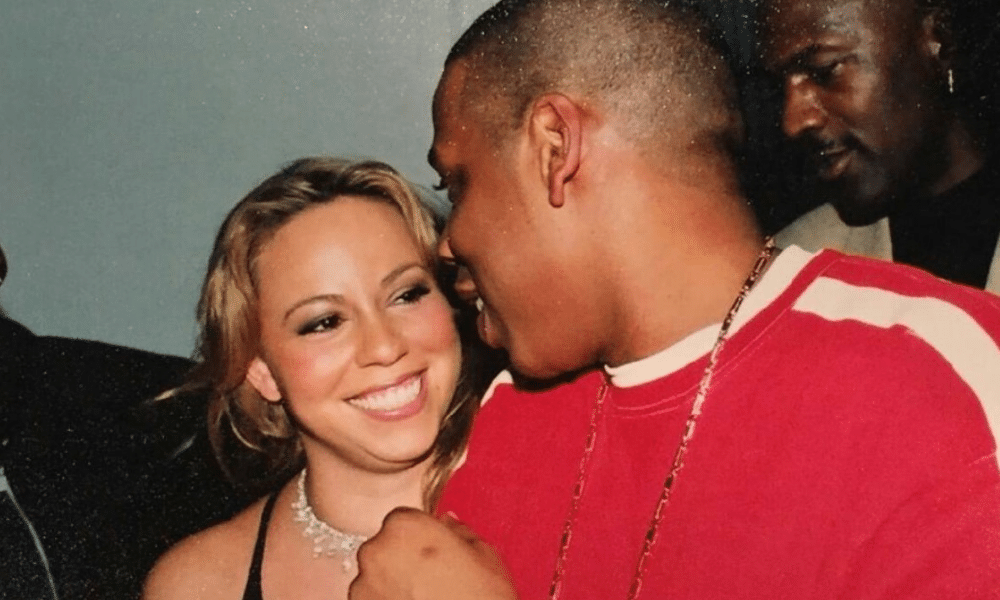
Making Hits and “Babysitting” Superstars
Even Jay-Z noticed Damizza’s fiercely loyal role. On the “Heartbreaker” video shoot, Jay was reluctant to show up, nervous that working with a pop diva might hurt his street cred. Mariah, under enormous pressure from Tommy Mottola’s meddling, was “freaking out” too. “Damizza babysits again,” Young quipped of that period. In the end he wrangled Jay-Z to set and calmed Mariah’s nerves, delivering a successful video. However, due to contractual bindings of Jay with his label, his scenes had to be replaced with a cartoon. “I remain proud of it all,” he writes – even if, as he notes, he often ended up playing “the ever-fun cross-country matchmaker” and hand-holder to get such collaborations across the finish line.
Damizza’s integration into Mariah’s inner circle grew with each project. By 2000, he had co-produced “Crybaby” (a sultry R&B cut featuring Snoop Dogg) for her Rainbow album. He also contributed to “If We” on the Glitter soundtrack. In between studio sessions, they would talk for hours about music strategy. Mariah was fascinated by the radio programmer mindset Damizza brought. “She could program a station in her sleep,” he says admiringly. For her part, Mariah gave Damizza a window into the top tier of show business – introducing him to A-list friends and even getting him involved in her live shows. (He once joined her onstage at LA’s Universal Amphitheatre to perform a song he’d produced, reveling in the surreal moment of him playing hype-man to Mariah Carey.)
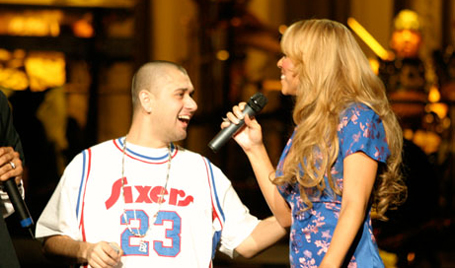
Through it all, Damizza insists, their relationship remained platonic but intensely close – “an intense four-year personal relationship,” as he described it when news of his planned memoir first surfaced. Mariah’s camp was sensitive about appearances; both went to lengths to keep the depth of their bond out of the press. Yet industry tongues wagged with rumors that the handsome DJ and the pop superstar were more than friends. Even Mariah’s ex-husband Tommy Mottola seemed to believe it. The very first time Damizza met the powerful Sony executive, Mottola immediately barked a crude question about Mariah: “So, you fuckin’ her?”. Damizza was stunned – “He was the president of Sony Music…asking me if I’m banging his ex-wife.” He curtly denied anything inappropriate. But the incident was a stark reminder that his proximity to Mariah was raising eyebrows at the highest levels. Although, recently in interviews, he contradicts his own biography by stating there was an affair.
Ironically, Tommy’s suspicion only galvanized Damizza’s loyalty. That’s when I knew I’d made it in the music business, he joked, that the boss thought I was important enough to be Mariah’s lover. More seriously, it showed him how alone Mariah was within the machine – even her ex was actively trying to “sabotage her and anybody who dared…try to help her,” as he saw during the Heartbreaker fiasco. From then on, Damizza appointed himself Mariah’s protector. “I tried so hard to protect her,” he writes, describing how he’d even take his name off her projects and use aliases to avoid the appearance of favoritism or conflicts of interest. (On the Glitter soundtrack, for instance, production credit for “Loverboy” went to a fictitious “Damion ‘Wyatt’ M.” – an inside joke referencing characters from their favorite 80s movie Weird Science.) “If the industry knew how much I had to do with Mariah it would be nothing but bad,” he explains – radio might cry bias, or label execs might panic. So Damizza stayed in the shadows, content to be the secret weapon in her camp.
Friends in High and Low Places
By the early 2000s, Damizza and Mariah Carey’s friendship had transcended the studio and spilled into their personal lives. Mariah began inviting him on getaways and adventures – sometimes to the dismay of Damizza’s employers. In 2001, for example, he was freshly hired in New York at Hot 97 (Power 106’s sister station) when he got an unusual request: Mariah wanted him to chaperone her on a vacation with her new boyfriend, Latin pop star Luis Miguel. She didn’t yet feel fully comfortable around Luis and “wanted to have a couple friends there” for support. Damizza didn’t hesitate. He essentially walked out of his job – negotiating a quick fix to secure the station’s top DJ contract before he left, then telling his boss he was flying to L.A. “Mariah’s sick and she has no support,” he said simply, by way of explanation. Even Hot 97’s senior leadership warned him he was making a “very big career decision” sacrificing work for her. But Damizza’s mind was made up: “Staying in New York for a job wasn’t an option when my best friend needed my help,” he reflects.
That choice landed Damizza on a private jet to Mariah’s tropical holiday – the kind of trip he once only dreamed about. Over a whirlwind week, he and Mariah grew even closer. In Jamaica, he and Luis Miguel bonded as “drinking buddies,” while Mariah beamed at seeing her friend and her beau on such good terms. One afternoon, Damizza was fiddling with beats for his own mixtape project when Mariah hopped in to help, co-writing a hook for a song (“If You Were Mine”) on the spot. She even offered to ghostwrite under the name “Sugar Cane” (Marilyn Monroe’s nickname) so that Damizza could keep all the publishing – a gesture of loyalty and friendship.
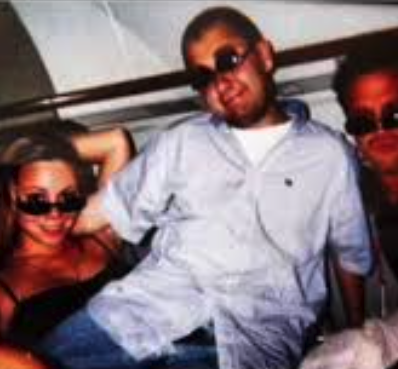
The vacation wasn’t all smooth sailing. During a leg in Mexico, their private plane malfunctioned mid-flight – oxygen masks dropping as the jet lost altitude. While Mariah’s team screamed and prayed, Damizza and Luis looked at each other, shrugged, and calmly poured themselves vodka. “If we’re gonna die, at least we’re gonna die having fun,” Damizza thought, as he and Luis clinked glasses with the plane in free-fall. The pilot righted the aircraft for an emergency landing, but the escapade became the stuff of legend in Mariah’s circle. After cheating death, the crew blew off steam at Disney World, where Damizza and Luis drunkenly commandeered a golf cart and promptly flipped it – sending Luis flying out and his security into a panic. “From now on I will drive!” the Latin crooner declared in exasperation after dusting himself off.
These antics showed a different side of Mariah – one far removed from the polished pop princess. Here she was cooking dinner on a yacht for friends, or goofily calling Damizza by their shared nickname “Al” (a reference to their political hero Al Gore) while joking about election conspiracy theories. Damizza saw her at her most unguarded and human. “She’s so beautiful…and she’s so sweet,” he observed, describing how she looked first thing in the morning, before the glam squad came in – freckles bare on her cheeks. Those quiet, real moments bonded them deeply. Damizza admits there were times he fantasized about quitting the industry altogether and “just be[ing] with her forever” as more than friends. But he knew better: Mariah was a global superstar; he was a young producer with his own path. “Such a one-sided relationship wasn’t healthy for either of us,” he concluded pragmatically, no matter what emotions stirred beneath the surface
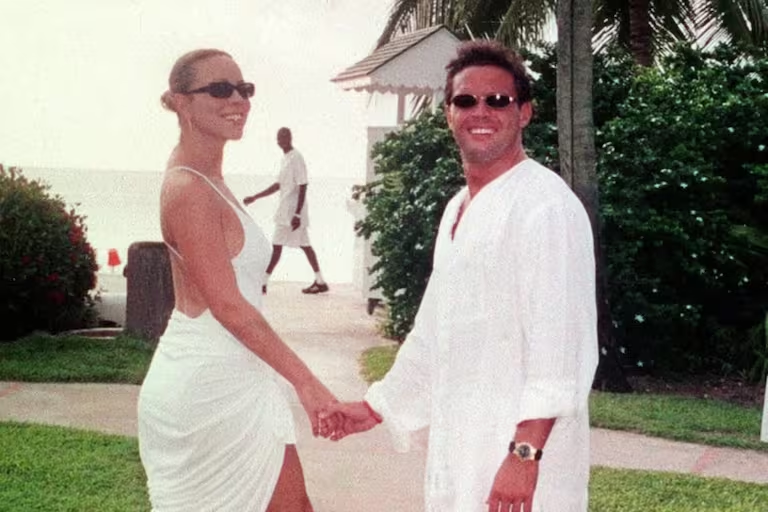
Freckles and the Human Side of a Superstar
If anything, Damizza became almost a brother figure – the guy who would tell Mariah hard truths that others wouldn’t. For example, when Mariah first told him about Luis Miguel’s interest in her, she fretted about her reputation (“I really haven’t been out with anybody [serious]” since her divorce, she confided). Damion’s advice? Don’t overthink it. “Come on! You gotta enjoy life. F*** all the bullshit,” he told her bluntly. Later, when Luis invited Mariah on that vacation, she nervously swore to Damizza, “I’m not going to sleep with him.” He rolled his eyes – “Why are you telling me this? … Go out and have some fun! You were cooped up in ‘Sing Sing’ for so long,” he said, invoking Mariah’s joking nickname for the mansion she felt imprisoned in during her marriage. In Damizza’s view, Mariah deserved to reclaim her 20s and enjoy a normal romance, tabloids be damned. She listened. Not long after, Damizza got a call from her assistant: Mariah wanted him to join them in Jamaica – and off he went, effectively chaperoning Mariah Carey’s dates at her own request.
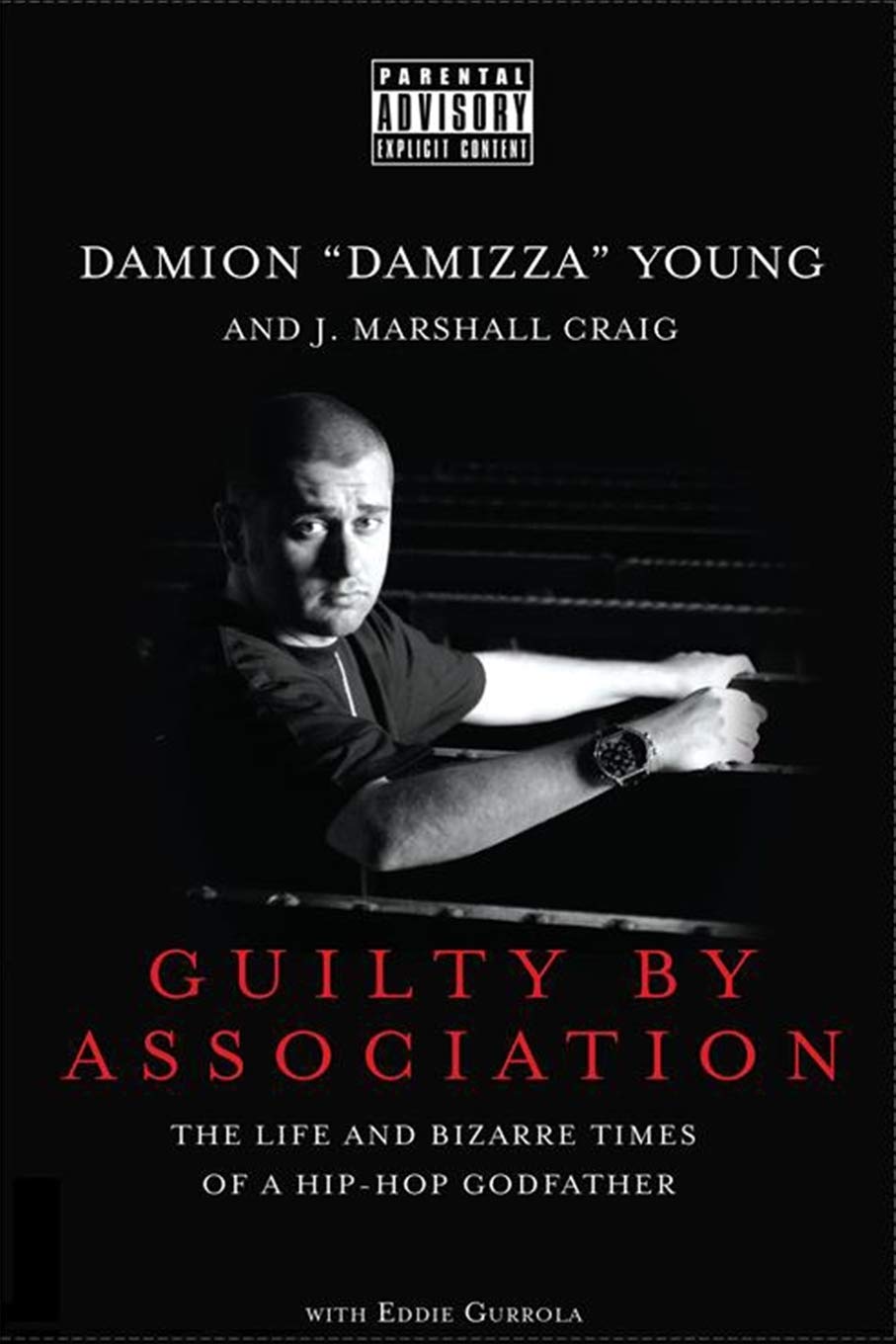
**“It’s All **ed Up”: The Glitter Era Breakdown
In 2001, Mariah’s go-go lifestyle finally caught up to her. She bit off more than even her indefatigable energy could chew – filming her first starring movie (Glitter) while simultaneously recording its soundtrack and promoting a new record deal. Damizza, ever protective, actually begged her not to take on so much. He felt the project was ill-conceived from the start. In fact, he had tried to steer her away from signing with Virgin Records for Glitter. “The company’s f***ed up and they don’t know what they’re doing,” he warned her bluntly. Mariah, however, was seduced by the unprecedented $100 million contract and the chance to build a film career alongside it. Damizza countered that launching a movie and soundtrack together was “too much, too soon” – especially with a label that had never worked with her before. He urged her to consider legendary exec Clive Davis’s new label instead, or at least release a traditional album first. But Mariah balked: after years under Tommy Mottola’s thumb at Sony, she had no interest in another powerful figure like Clive having creative input. Glitter was her gamble, and she was going all in.
As Glitter moved forward, Damizza watched with growing concern. Virgin’s team seemed clueless (“the label…was looking to Mariah and asking, ‘So, how do we break this record?’” he observed incredulously). Mariah, lacking a strong manager, was essentially managing herself – “A&Ring her record, and trying to deal with everything else” alone. By that summer, she was unraveling. In late July 2001, Damizza got an alarming phone call from Mariah. “I haven’t slept for two days. I haven’t eaten,” she confessed, her voice frantic. She had been shooting a music video for the lead single “Loverboy” on no sleep, subsisting on energy drinks and sheer willpower. “The album’s comin’ out but nothin’s right,” she told Damizza in a panic, words tumbling out in a “flurry of hypothetical disasters.”
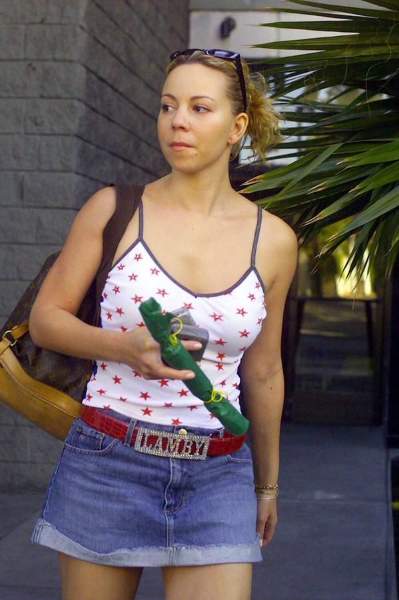
Damizza flew to her side. When he found Mariah in a New York hotel, he was startled by her condition. She was “exhausted, plain and simple,” and emotionally brittle. He gently insisted she see a doctor and get some real rest. To his relief, Mariah agreed. He brought her to an upscale hospital in Connecticut where doctors diagnosed extreme dehydration and fatigue. They wanted to admit her for a few days of monitored recovery. Damizza made sure her entourage was kept at bay – “absolutely NO entourage of any kind,” he ordered, knowing she needed total peace. He also tried to keep it quiet from the press that Mariah was hospitalized for “exhaustion,” fearing sensational coverage of a “nervous breakdown”.
But fate had other plans. On Mariah’s third day in the hospital, September 11, 2001, terrorists struck New York and Washington. In the global chaos that morning, Mariah – still woozy but stabilizing – heard erroneous reports that Los Angeles might be attacked next. Panicked, she called Damizza in a frenzy: “Come get me now! They say the hospital might be attacked!”. He and Mariah’s brother Morgan raced to the clinic and discreetly checked her out, figuring anywhere would be safer than a potential target. Hospital staff suggested they exit through a rear door to avoid paparazzi. Unbeknownst to them, that “back entrance” was actually by the facility’s psych ward – and a tabloid photographer lay in wait. The next week, the National Enquirer ran a lurid photo of Damizza helping a wan Mariah into a car under a sign reading “Psychiatric Unit.” The headline blared that Mariah Carey had suffered a mental breakdown.
Damizza was livid at the media’s distortion. “It was all bulls***,” he insists. “Mariah did not have a breakdown – she was exhausted, just like I was”. Indeed, the nonstop stress had taken a toll on him too. In the wake of Mariah’s crisis, Damizza began to crumble under his own pressures. He had spent months in “damage control” mode for Mariah at the expense of his other responsibilities and health. By early 2002, he was drinking heavily and missing work – “coming undone,” by his own admission. “Truth be told, I was the one who was starting to unravel, not Mariah,” he reflects on that period. Mariah, for her part, emerged from her rough patch stronger. She quietly finished out her Virgin contract (the Glitter album ultimately went platinum despite the narrative of “bomb” around it) and secured a record-breaking $28 million severance from the label in early 2002 – essentially being paid to walk away and start fresh. “The golden goose has landed,” she told Damizza gleefully upon receiving the check.
Seeing Mariah healthy and happy again was a relief. But it also marked a turning point in their relationship. During the Glitter saga, Damizza had essentially lived with Mariah and managed her day-to-day needs – he became “that guard dog” by her side 24/7, even sleeping on her couch because she could only relax if he was in the room. Now that she was recovering, Damizza realized he needed to step back and reclaim his own life. He had projects of his own (his Baby Ree label and an artist Shade Sheist taking off overseas) that he’d neglected. And he felt a sting of under-appreciation – Mariah hadn’t heeded many of his warnings, from the Virgin deal to the infamous next chapter involving Eminem. “She wasn’t even taking the advice I was giving her,” he notes, frustrated. It was time, he felt, to let go for a while.
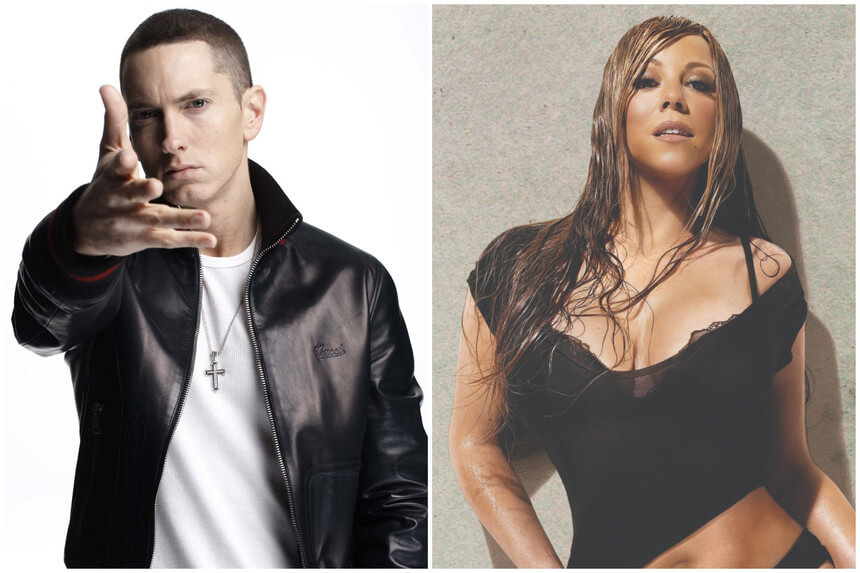
The Eminem Feud – and 2025’s Revelations
Perhaps the biggest piece of advice Mariah ignored was Damizza’s plea to steer clear of a certain hotheaded rapper from Detroit. In the summer of 2001, even as Glitter was imploding, an opportunistic offer came in: Eminem wanted to meet Mariah Carey. According to Damizza, he got a call out of the blue from Steve Stoute – the record exec notorious for being Tommy Mottola’s henchman – saying Eminem was interested in Mariah for a role in his upcoming film 8 Mile. Damizza’s alarm bells went off immediately. “As soon as I see or hear from Stoute, it’s a red flag,” he thought, given Stoute’s history with Mariah’s ex. Eminem was also known for publicly skewering pop stars (his feuds with women like Christina Aguilera were already headline news). Damizza knew Mariah’s curiousity might be piqued by a credible film offer – this was her “Achilles’ heel,” in his words, as she was eager to prove herself in Hollywood. But he feared it would end in disaster.
“If you get into a relationship with [Eminem] and it blows up, it will be ugly and there won’t be anything I can do for you,” Damion warned Mariah bluntly. At first, Mariah was wary too – she didn’t want to become fodder for one of Eminem’s diss tracks. She agreed to have Damizza on the line if she spoke to him. When Damizza approached Eminem, he begged him not to play any games: “Don’t do this. I know where you’re going with this,” he said, alluding to Eminem’s pattern of mocking female celebs. Eminem insisted his intentions were genuine – “I genuinely want her in the movie,” he promised. Thus reassured, Damizza arranged a three-way phone introduction.
That call, as Damizza and Mariah recounted it, was awkward from the start. Eminem got right to the point: I want you to play my mother. Mariah was stunned – she was 30, only four years younger than Eminem, and he wanted her to portray his mom? “She did not like that s— at all,” Damizza says now of her reaction. Her insecurities kicked in, and understandably so: Mariah quipped that she’d rather be the love interest, not the mom. (Indeed, once they saw the 8 Mile script, it was clear Mariah was too young for the mother role and too old for the girlfriend role – Damizza realized “it didn’t take much imagination to know [Eminem] didn’t actually want her for the film” at all. In the end, the mom part went to Kim Basinger.) Still, Mariah and Em seemed to vibe on some level. Mariah agreed to meet him in person to discuss it further, and when her album release party brought her to New York, she invited Eminem to come by. Damizza was exhausted and begged off the follow-up trip to Detroit that Eminem proposed. “I’ll meet you in L.A. – I’ve got to get back to Power,” he told Mariah. But she refused. “You’re going with me to Detroit. You’re not leaving me alone with this dude,” she insisted. Reluctantly, Damizza boarded a plane yet again at Mariah’s behest.
In Detroit, the dynamic took on a life of its own. Eminem picked them up personally at 2 a.m., joking and brainstorming with Mariah about music collaborations on the drive to his house. Sensing a positive rapport, Damizza peeled off to let them be, checking into a hotel. The next morning, to his surprise, Mariah was still at Eminem’s house – she reported they had all stayed up late hanging out and just crashed there. Eminem even cheerfully sent a limo to bring Damizza over, welcoming him to tour his home studio and meet his family. For a moment, Damizza allowed himself to hope he’d misjudged. “Everything seemed to be going great at first…They were talking and laughing,” he recounts.
That hope evaporated when he saw proof – literally Proof, Eminem’s close friend from group D12 – emerge from the basement with two groupies on his arm. The optics were bad. “Mariah’s here. Eminem’s here. And Proof just came out…with two girls. What does this look like? Bad,” Damizza thought with a sinking feeling. He again urged Mariah privately to bail out of the situation: “You’re gonna end up on the ugly end of this however it turns out,” he cautioned on the flight home. “Em already tried to pull one on you by saying you could play his mother…there’s not much respect there”. But Mariah’s head was in the clouds. She insisted Eminem was a “great guy,” that they had connected taking a long walk and sharing their life stories. Damizza sighed; he’d done all he could. “I warned her about Glitter and I’d now warned her about Eminem,” he writes. The album was done. Mariah was moving on with her life – and perhaps with a new man. It was time for him to “back off again”.
What followed was the stuff of gossip column infamy. Mariah and Eminem carried on a low-key dalliance for a few months (Mariah has long maintained it was strictly friendship, while Eminem later claimed it was more). By 2002, whatever goodwill existed soured – badly. Eminem, feeling spurned, began taking lyrical shots at Mariah. Damizza got a foretaste of the brewing storm when Dr. Dre called him into the studio one day and delicately played him a new Eminem track laced with thinly veiled Mariah insults. “Em dissed Mariah,” Dre told him flatly. Damizza’s heart sank. “Just what I needed,” he groaned sarcastically, but tried to stay above the fray. “It’s between them…It’s her fault for getting involved with him,” he said, throwing up his hands. In private, he was furious with Mariah for not heeding his warning. They fell out of contact for stretches, even as he still worked behind the scenes to repair her public image which was “taking a pretty bad bruising” from the whole messy episode.
Sure enough, the Mariah–Eminem war escalated into one of pop culture’s nastiest feuds. By 2003 Eminem was taunting her on tour and in songs; Mariah responded coyly through her music (her hit “Obsessed” years later was widely seen as a parting shot at Em). Damizza found himself awkwardly in the middle. Eminem’s manager Paul Rosenberg even called Damizza in a rage at one point, complaining that Mariah had flown to meet Eminem in New York when he was prohibited from traveling. The visit leaked to the press, and Rosenberg threatened to “demolish” Mariah’s reputation in retaliation. Damizza pleaded with Paul to stand down. “Please don’t let him diss her…don’t release anything,” he begged. Paul agreed to calm Eminem if Mariah stopped talking about the situation, which Damizza assured him she would. Then Damion raced to Mariah’s apartment and confronted her. He found her smugly unbothered – Eminem had just left in a hurry, forgetting his CD case, and she smirked that he had to rush home to avoid violating probation. Damizza was appalled. “What are you doing?” he scolded her. She just smiled and reiterated that Em was “a great guy,” brushing off Damizza’s concerns. At that, Damion gave up. “She acted like I wasn’t even there,” he says of this final attempt to talk sense into her. He left, depressed and exhausted. In his eyes, Mariah had lit a powder keg that was bound to explode – and it did, with Eminem eventually skewering her (and even including voicemails alleged to be hers in a diss track). Damizza’s only solace was that he had tried everything to prevent it.
Years later, the Eminem saga continues to follow Mariah – and Damizza – like a ghost. In June 2025, Damizza gave a rare podcast interview in which he “finally revealed” what he believes truly ignited Eminem’s hatred for Mariah. According to Damizza, the breaking point was that meeting in New York: Eminem supposedly asked Mariah to star as his mother in 8 Mile, and “she did not like that s— at all”. Her rejection – and perhaps the bruising of his ego – led Eminem to go “savage,” as Page Six put it, kicking off two decades of on-and-off disses. Damizza’s 2025 recounting aligns closely with what he wrote in his memoir and told friends at the time: Mariah’s “insecurities kicked in” when Marshall Mathers suggested she play mom, and he knew nothing good would come of their association. The difference is, Damizza feels freer to discuss it openly now – back then, he was bound by loyalty (and likely non-disclosure agreements) not to bad-mouth Mariah publicly. In 2008, when Guilty by Association was being shopped, Mariah’s lawyers even sent a cease-and-desist to try and halt it. She was reportedly concerned about how he’d characterize their “intense four-year personal relationship” and didn’t want certain private matters exposed.
Ultimately, Damizza’s book was released in 2011 with a tone that was both candid and protective of Mariah. He never outright calls their relationship a romance, though he paints it in romantic hues (“I had to leave because I loved her,” he writes of stepping away in 2001). He also staunchly defends her mental health during the Glitter debacle, laying blame on circumstance and overwork, not any failing on Mariah’s part. In recent interviews, that protective streak remains: he still emphasizes that she was unfairly maligned. Yet there’s also a note of lingering frustration. On the 2025 podcast, Damizza laughingly called himself Mariah’s “manager” during the Eminem episode and admitted introducing them against his better judgment so he wouldn’t be the “bad guy” who kept it from her. It’s a subtle shift from the self-effacing friend in his memoir who tried to “stay out of it.” Now, he more openly acknowledges the role he played in her career and life decisions – and implies that he knew best even when she didn’t listen.
Epilogue: “Guilty by Association,” Forever
In February 2002, mere months after her apparent nadir, Mariah Carey stood on the field at the Super Bowl in New Orleans and delivered a flawless, emotionally charged rendition of “The Star-Spangled Banner.” Damizza was there, hovering in the wings. He wasn’t producing the performance or running her team anymore; he was there as a friend – and, truthfully, as someone who now needed her support while he battled his own demons. To his delight, Mariah was in a radiant mood that day. Virgin Records had just paid her an enormous settlement to end their deal after Glitter – she triumphantly told Damizza “the golden goose has landed” upon getting the check. She was free, wealthy, and about to remind 90 million viewers of her unrivaled talent. Backstage, Damizza and Mariah shared a laugh about spotting former Vice President Al Gore in attendance – fulfilling their inside joke of calling each other “Al”. Mariah teased Damion not to do anything crazy like actually approach Gore, but of course he did, introducing himself cheekily as “Mariah Carey’s best friend”. (Gore graciously said he was a fan of Mariah’s and even enjoyed Glitter, to their endless amusement.)
Not long after, Damizza’s active role in Mariah’s life quietly tapered off. He left radio, went through rehab for his alcoholism, and focused on his own artists. Mariah went on to stage a real comeback in 2005 with The Emancipation of Mimi, re-establishing herself at the top of the charts. They remained friendly – Damizza says if he called, Mariah would pick up, and vice versa – but they no longer spoke daily or vacationed together. In the years since, Damizza has reflected on their unique bond with equal parts pride, nostalgia, and a hint of bitterness. “I knew at some point she wouldn’t need me anymore,” he writes, recalling how he had foretold that the business would eventually “ruin this [friendship] for us”. For a time, he admits, he felt cast aside and resentful. In one poignant passage, he describes watching Mariah ignore his advice and feeling that she didn’t appreciate how he’d dropped everything for her. That was when he finally put distance between them, hurt that “she wasn’t appreciating what I was trying to do”.
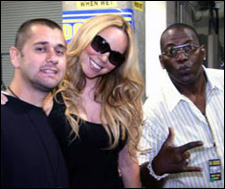
Yet Damizza has never truly broken away from Mariah, not in spirit. Even when he planned his memoir, he positioned it as an homage, not a hit job. The very title – Guilty by Association – winks at how being Mariah’s friend defined (and complicated) his own reputation. And he remains quick to defend her legacy. In interviews, he’s careful to counter the exaggerated narratives about her “breakdown” or Glitter being a flop (“the album was certified Platinum. That ain’t no bomb,” he insists). At times, he even sounds like a proud family member. On the People magazine podcast in 2025, he celebrated how Mariah was “doing great” by the mid-2000s, having proved that Glitter’s stumble was just a blip. He recounted, with a chuckle, how in 2005 she called him practically giddy that her then-record label (Def Jam) – the one he’d advised her against joining – was finally getting it right promoting her smash hit “Heartbreaker” sequel (“Shake It Off”), validating her faith in that choice. The irony isn’t lost on him that the comeback album was tellingly titled The Emancipation of Mimi – in many ways, the freedom he always wanted for her.
Today, Damion “Damizza” Young is in his late forties, a seasoned industry veteran with perspective to match. Mariah Carey is an undisputed icon. Their paths occasionally cross professionally – he still produces and consults – but more often, they intersect only in memories. “Whether it’s in her best interest or not doesn’t seem to matter to many of these people,” Damizza once wrote about the swarm of sycophants around Mariah. He always saw himself as one of the genuine ones. And despite the ups and downs, Mariah seemed to recognize that too. In a heartfelt reflection, Damizza recalls a moment when she told him, during a vulnerable conversation about her trust issues, “Don’t let [the business] ruin this for us.” That plea speaks volumes about the rare friendship they shared in a world of fickle allegiances.
Damizza and Mariah’s story is not a simple one of mentor and muse, nor of lovers torn apart – it’s more complex and human. It’s the story of two people who met by chance through music, forged a bond few understood, and helped save each other in different ways. He guided her through career crises and personal lows; she, in turn, gave him a purpose bigger than spinning records, and later, the tough love to fix himself when he was “the one who was lost”. Their relationship evolved from fervent, all-consuming closeness to a calmer, distant respect. And while they no longer speak every day, Damizza’s recent candid recollections – dropping nuggets about Eminem and Glitter on podcasts – show that Mariah Carey will forever be a defining chapter of his life. He wears the label “Mariah’s best friend” proudly, even years after their association ceased to be daily.
“I gotta tell you this about Mariah Carey,” Damizza writes with earnest admiration. “She is, and has always been, a huge fan of radio…The girl thinks ahead. It’s something she doesn’t get enough credit for”. In that spirit, perhaps the best way to frame their saga is through the medium they both loved: a series of songs on the airwaves, each marking a phase of their journey. The sweet remix of “I Still Believe” where a young DJ earned a diva’s trust; the triumphant “Heartbreaker” that he willed into being; the melancholy “Crybaby” recorded in a haze of late-night creativity and stress; the ill-fated Glitter soundtrack he tried valiantly to steer; and the postscript songs, like “Clown” and “Obsessed,” that hint at the drama he warned her about. Damizza was there for all of it – guilty by association in the court of public opinion, but, in truth, simply a friend by her side.
Their relationship might have started as an unlikely phone call between a star and a fan, but it became something far more profound: a tale of loyalty in an often disloyal business, of two very different individuals who clicked over a shared passion, and of the complicated, messy love that can exist between a man and a woman who were never quite lovers. Damizza’s journey with Mariah Carey is indeed a “mind-blowing” one – spanning couch-crashing at Snoop Dogg’s house to introducing Mariah to Al Gore backstage at the Super Bowl – and he’s finally telling it on his own terms. In doing so, he hasn’t damned or disowned Mariah; if anything, his tone in 2025 is one of enduring protectiveness tempered by brutal honesty. He’ll dish on her Achilles’ heels and insecurities, yes, but also remind the world that she’s “so brilliant, so generous, so fun-loving” behind the diva veil.
The Damizza–Mariah saga ultimately underscores Mariah Carey’s oft-quoted lyric: “If you get the chance to be with a friend, hold on.” Damion Young held on as long as he could. And even now, when he cracks open the vault of those years, one can sense the lingering reverence and affection he has for the artist who changed his life. He may not be by her side anymore, but he remains, in some corner of his heart, Mariah’s friend. And in hers? Perhaps the truest measure is that Mariah – who famously slams ex-lovers in songs and feuds – has never publicly uttered a bad word about Damizza. She didn’t need to: he was never the enemy. He was the ally who saw her at her worst and best, and loved her all the same. In the end, Damizza is content to let the association speak for itself, guilty or otherwise. As he once said, reflecting on all the incredible life-so-far he experienced thanks to Mariah: “Stick around – we’re going to lift the veil on [my] 30-plus-year…involvement with the biggest stars,” he teased at the start of his memoir. Indeed, behind that veil was a story of a pop superstar and a hip-hop DJ who became unlikely confidants, weathering the heights of celebrity and the depths of crisis together – a story neither could have written alone.
Sources:
Damion “Damizza” Young with J. Marshall Craig, Guilty by Association (2011)
People Magazine, “Eminem Wanted Mariah Carey…to Play His Mother in 8 Mile,” June 10, 2025
Page Six / TFU Podcast, Damizza interview, June 2025 (as reported by People)
AllHipHop News, “Mariah Attempts to Block Memoir from Alleged Lover,” Sept. 11, 2008
Guilty by Association excerpts (Introduction by J. Marshall Craig); (Mariah Carey chapter “Don’t Forget About Us”); (Jay-Z chapter); (Glitter era narrative); (Eminem saga); etc.
